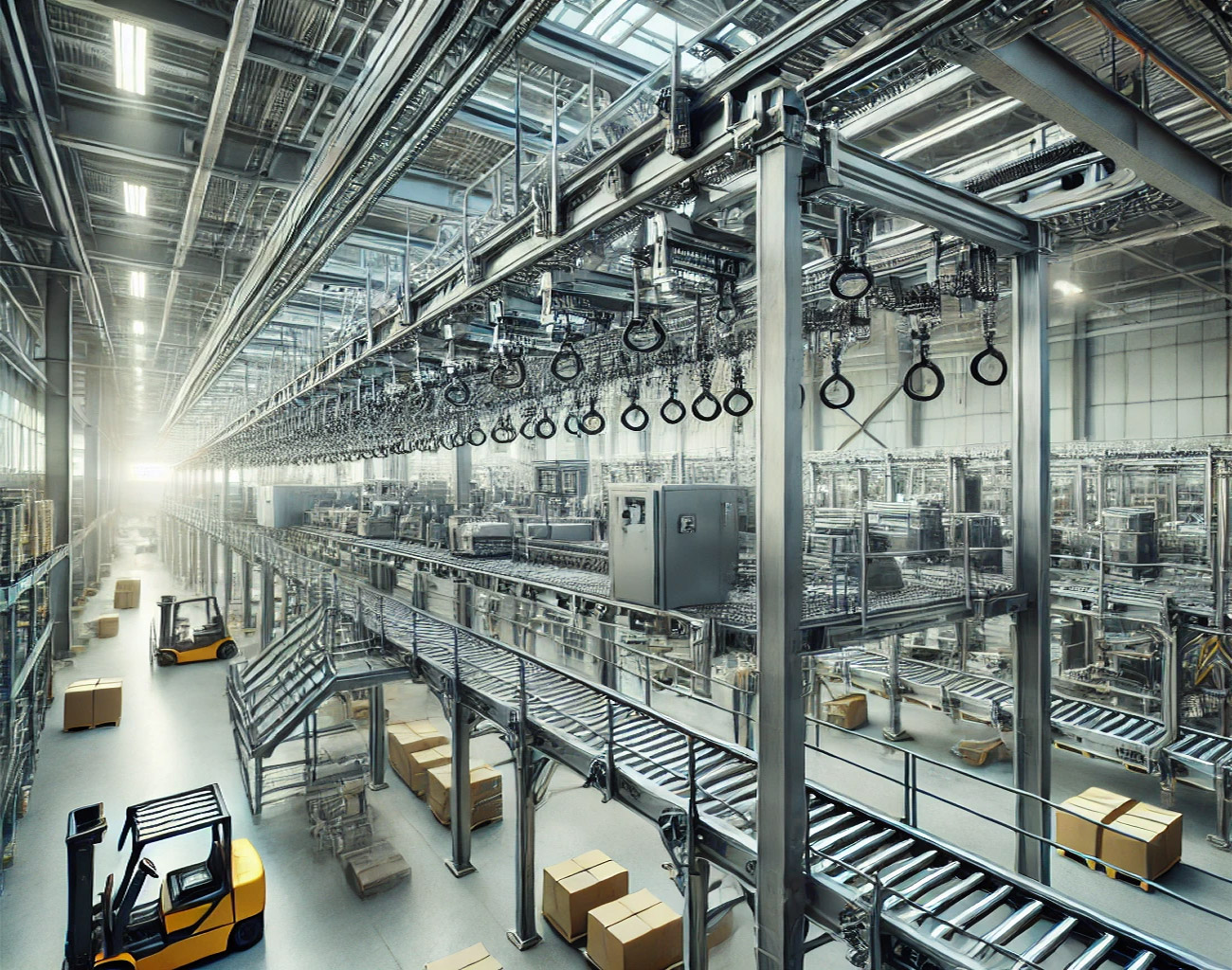Overhead Conveyors 101 – What they are used for and why
Overhead Conveyors: Warehouse Basics
An overhead conveyor gets its name from its typical location in a plant, factory, or warehouse: positioned up high, overhead. These conveyors make use of the often-unused vertical space above machines and workers in a warehouse.
Enclosed Track Conveyor
The mechanism of an overhead conveyor is relatively simple. It features a chain made up of bearings and links, which is pulled through a track. This type is known as an enclosed track overhead conveyor because the chain is largely covered by the track, making it safer for operators and less likely to accumulate dirt, dust, paint, or other contaminants. While open-style conveyors are also available, they may be less suitable for certain applications.
Conveyor Terminology
Each overhead conveyor system consists of the following components:
- A continuous chain circuit running through a track with vertical and horizontal curves.
- A drive unit that moves the chain through the track.
- A take-up unit that keeps the chain tightly stretched, compensating for wear over time.
- Electrical controls that could be as simple as an on/off switch or more advanced systems like variable speed controllers, industrial-grade PLCs, or even PC-based controls.
Synchronous Conveyor
The term “synchronous” refers to a type of overhead conveyor system where all loads move at the same, synchronized pace due to the continuous chain that carries them.
Loads are carried using fixtures, which can range from simple to complex designs with moving parts that secure and manipulate the load. These fixtures are designed to move along the track smoothly, including vertical movements.
Overhead Conveyor for Non-Conveyable Loads
The overhead conveyor can transport loads that are typically considered non-conveyable due to their shape. These systems are commonly used in industrial painting processes, where human handling is not possible. The conveyor can carry loads through harsh environments such as caustic washers, spray booths, paint application areas, and even through very hot drying or baking ovens.
Energy-Efficient Conveyor
Another key advantage of overhead conveyors is their energy efficiency. Most systems operate with just one motor, capable of powering 7000–8000 feet of conveyor, using less energy than a typical hair dryer. This makes overhead conveyors an eco-friendly option for warehouse operations while also reducing costs. For more details, watch the video below on overhead conveyor basics:
Please log in to leave a comment.


No Comments Yet